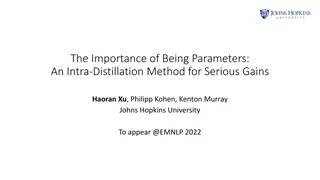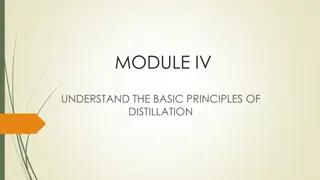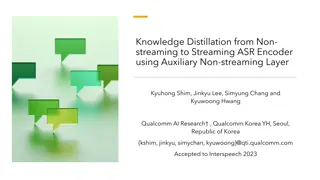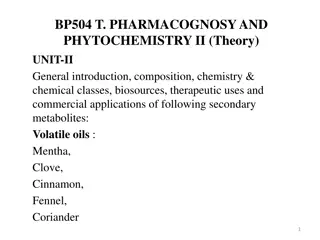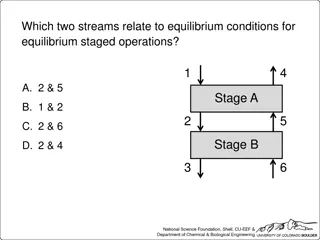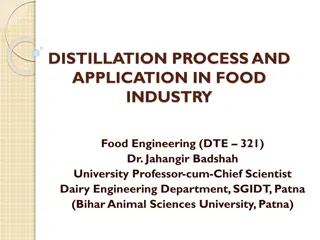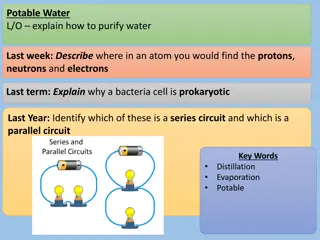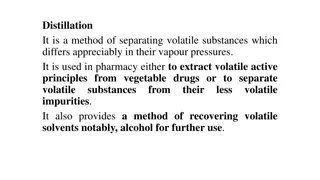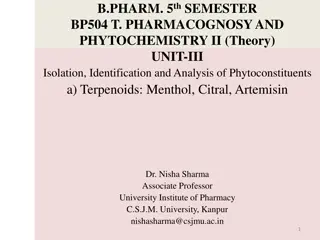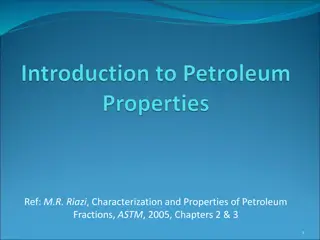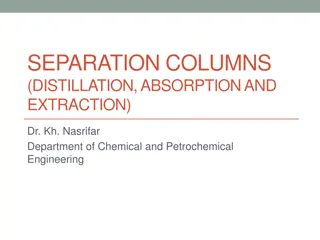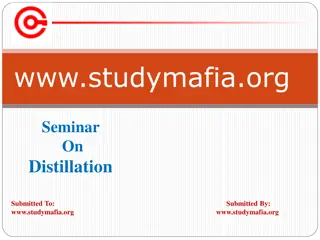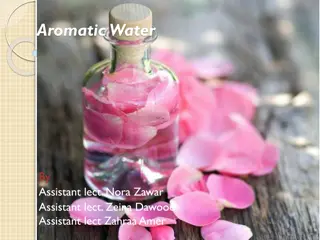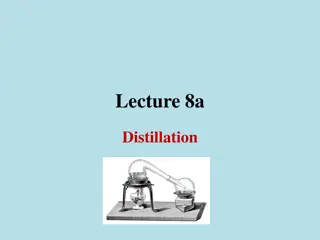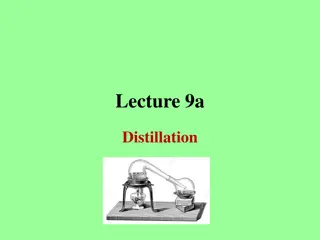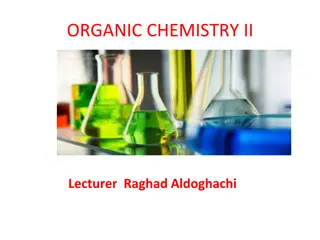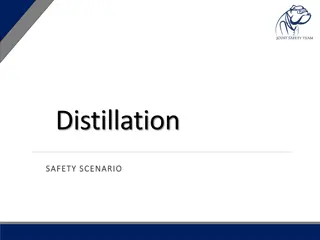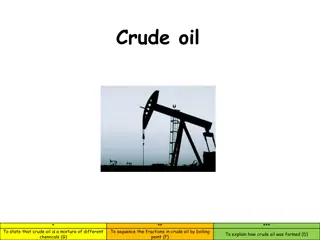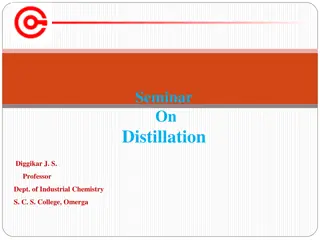Overview of Distillation: Methods and Applications
Distillation is a crucial process for purifying liquid organic compounds by converting them to vapor and then back to liquid through condensation. This process is vital for various applications, including the separation of different liquids based on their boiling points. Distillation methods such as simple distillation, vacuum distillation, steam distillation, and fractional distillation play a significant role in achieving purification goals. However, challenges like the decomposition of organic compounds under normal atmospheric pressure limit the scope of distillation. Azeotropic mixtures present additional complexities as they form constant-boiling mixtures that cannot be separated through traditional distillation methods.
Download Presentation

Please find below an Image/Link to download the presentation.
The content on the website is provided AS IS for your information and personal use only. It may not be sold, licensed, or shared on other websites without obtaining consent from the author.If you encounter any issues during the download, it is possible that the publisher has removed the file from their server.
You are allowed to download the files provided on this website for personal or commercial use, subject to the condition that they are used lawfully. All files are the property of their respective owners.
The content on the website is provided AS IS for your information and personal use only. It may not be sold, licensed, or shared on other websites without obtaining consent from the author.
E N D
Presentation Transcript
Distillation : is process of purification of liquid organic compounds by conversion to the vapor state with the aid of heat and condensation of the vapors state to the liquid state((the liquid with the lower boiling point) with the aid of heat . The temperature at which the liquid distills is definite value (at a given pressure)for every pure organic compound and is known as the boiling point.
Aim of the experiment: 1.Purification of liquid organic substances. 2.Determination of the boiling point. 3.Separation of liquid organic substances from each other or from a nonvolatile solid compound. Distillation limited to a certain extent because some organic compounds decompose when an attempt is made to distill them at a normal atmospheric pressure.
TYPES OF DISTILLATION: 1.Simple distillation: This method is used for the separation of liquids having boiling points ranging from 30 C to 150 C and is stable to heat.
2.Vacuum distillation. (Distillation under reduced or diminished pressure): This method is used for the separation of liquids with high boiling points or is unstable to heat. These difficulties may be overcome by lowering the pressure over the substance, thus lowering the boiling point and the temperature necessary to effect the distillation (diminished- pressure distillation).
3.Steam distillation: This method is used for the purification of non-volatile organic compounds and which are immiscible with water.
5.Fractional distillation: This method is used for the separation of two or more liquids with different boiling points. Fractional distillation is the process of collecting separate fractions according to controlled boiling ranges during the distillation of a mixture of substances.
Azeotropic mixtureis a mixture composed of two or more liquids that form a constant-boiling mixture that boils at a certain temperature. It is impossible to separate them by fractional distillation. For example, a mixture of approximately 95% ethyl alcohol and 5% water produces a constant-boiling mixture (Azeotropic mixture) which boils at 78.15 C. Other examples of Azeotropic mixtures include: Benzene and ethanol Carbon tetrachloride and methanol Amine and phenol Formic acid and water Toluene and acetic acid Ethanol, Benzene, and water
Simple distillation: A single, individual organic substance is readily distilled with ordinary distillation apparatus which consists of a distillation flask fitted with a thermometer and water-cooled condenser. Two or three pieces of broken porcelain chips are placed in the flask with the substance to be distilled; they prevent bumping by producing a constant stream of bubbles that keeps the liquid in motion. If the liquid is quite volatile (low boiling), the flask is heated by a water bath rather than by a flame.
Useful notes: Pure compound distill over a very narrow range of temperatures. The boiling point is affected by impurities; some may increase the boiling point, others may decrease it, and some may not affect it. For example the addition of sodium chloride to water results in raising the boiling point of water. The effect observed here is the lowering of the vapor pressure of water that is, the tendency of the molecules to escape has been diminished. Usually the first few milliliters contain water or volatile impurities; the second portion contains the pure substance.



